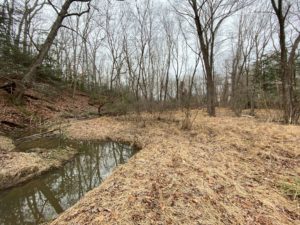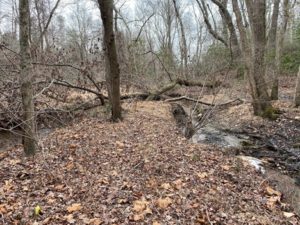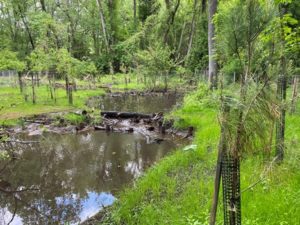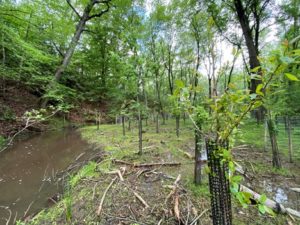May 13, 2021
Annapolis Landing Stream Restoration
Annapolis Landing Project is Completed!
 Beards Creek is the 3rd most polluted creek on the South River. This stream restoration project, completed in May, 2021 is located in the community of Annapolis Landing in Riva, MD.
Beards Creek is the 3rd most polluted creek on the South River. This stream restoration project, completed in May, 2021 is located in the community of Annapolis Landing in Riva, MD.
The project restored 1,844 linear feet of stream and will prevent 760 pounds of nitrogen, 124 pounds of phosphorus, and 9.3 tons of sediment pollution annually.
This stream collects runoff from over 3,000 feet of paved road that is fed through three different storm drain networks. The stormwater pond that overflows into the stream restoration site drains nearly 70 acres, 39% of which is impervious (does not absorb water).
This restoration technique was based on a pilot project that the Federation did for the Bacon Ridge Natural Area in Crownsville a few years ago, using a method that had been effective on the West Coast of the US.
Beaver Log Jams: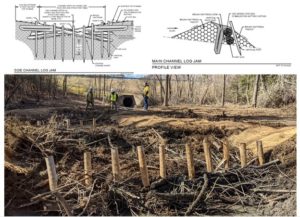
The technique uses wood log jams, similar to beaver dams, to slow and spread out the water onto the flood plain, where excess nutrients will be absorbed by wetland plants. Since the restoration approach doesn’t use stone, it has a much smaller carbon footprint, is more cost efficient, and re-uses woody debris on site.
The project was designed by BioHabitats, constructed by Meadville Land Service, and funded by Chesapeake Bay Trust, MD Dept. of Natural Resources, and Anne Arundel County Bureau of Watershed Protection and Restoration.
We want to thank the community of Annapolis Landing, which could not have been more supportive. “If every community was as dedicated to clean water as Annapolis Landing, our rivers would be in much better health,” said Jennifer Carr, Director of Restoration.
Creating Wildlife Habitat
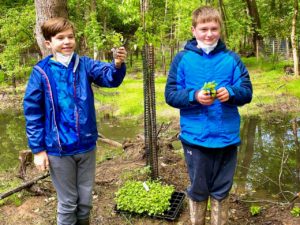 The Federation planted 1,100 native trees and shrubs plus 700 live stakes that will grow into shrubs as part of the permitting requirements. We also worked with community members, Watershed Stewards and Boy Scouts to plant an additional 400 native herbaceous wetland plants.
The Federation planted 1,100 native trees and shrubs plus 700 live stakes that will grow into shrubs as part of the permitting requirements. We also worked with community members, Watershed Stewards and Boy Scouts to plant an additional 400 native herbaceous wetland plants.
Learn more here:
BEFORE and AFTER Photos:
